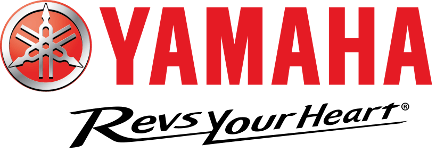Your outboard engine might be running strong, but if your propeller isn’t properly matched to your boat or is damaged, you’re losing out on speed, fuel economy, and overall performance. The propeller is more than just a spinning blade—it’s the crucial connection between your Yamaha engine and the water. Choosing the right prop can make all the difference between a smooth ride and a frustrating day on the water.
In this post, we’ll break down common propeller problems, how to diagnose performance issues, and how to choose the right Yamaha propeller based on your boating needs.
⚠️ Why the Right Propeller Matters
Think of your propeller as the transmission of your boat. It controls how effectively your engine transfers power to the water. A well-matched prop:
- Maximizes fuel efficiency
- Improves top speed
- Enhances acceleration and handling
- Reduces engine strain and wear
On the flip side, the wrong propeller can lead to:
- Sluggish acceleration
- Poor fuel economy
- Over-revving or under-revving
- Cavitation or ventilation issues
- Long-term engine damage
🔍 Common Signs You May Have the Wrong Propeller
Not sure if your current prop is doing its job? Look out for these signs:
- Your boat struggles to get on plane
- RPMs are too high or too low compared to Yamaha’s recommended operating range
- Fuel consumption is noticeably high
- Slippage or vibrations at higher speeds
- Black exhaust marks near the propeller hub (a sign of cavitation)
- You’ve added more gear, weight, or passengers since your last prop change
⚙️ Key Factors to Consider When Choosing a Yamaha Propeller
Choosing the right prop isn’t guesswork. It’s about matching the right design to your boat’s size, weight, and purpose. Here are the major things to consider:
1. Pitch and Diameter
- Pitch: The distance the propeller would move in one full rotation (like threads on a screw).
- Lower pitch = better acceleration, slower top speed
- Higher pitch = better top speed, slower acceleration
- Diameter: The width of the circle made by the rotating blades.
- Larger diameters are better for heavy loads
- Smaller diameters suit lightweight or high-speed applications
💡 Your goal is to stay within Yamaha’s recommended WOT (wide-open throttle) RPM range—usually 4500–6000 RPM depending on the model.
2. Material: Aluminum vs Stainless Steel
- Aluminum Props
✅ Affordable
✅ Lightweight
❌ Less durable
❌ More flex at high speeds - Stainless Steel Props
✅ Extremely strong
✅ Maintains pitch at all speeds
✅ Offers better acceleration and top-end performance
❌ More expensive
3. Number of Blades
Most Yamaha props come with 3 blades, which offer a balance of speed and handling. 4-blade props provide:
- Better control in rough water
- Quicker plane time
- More lift for heavier boats
However, they can slightly reduce top speed compared to 3-blade props.
4. Propeller Types and Yamaha Series
Yamaha offers specialized propeller series tailored for various needs:
- Saltwater Series II™ – Ideal for offshore power and durability
- Reliance® Series – Lightweight and performance-focused
- Talon™ Series – Great for smooth, quiet operation (especially with pontoons)
- Performance 3™ and 4™ Series – High-speed boats and aggressive handling
For a complete breakdown of Yamaha’s official propeller recommendations, visit their Propeller Solutions page.
🛠️ Diagnosing Prop Damage
If you’re already running a Yamaha propeller but suspect performance issues, inspect the following:
- Bent or chipped blades
- Fishing line wrapped around the shaft
- Corrosion or pitting from saltwater
- Loose or damaged hub
- Excessive vibration or noise
Pro Tip: A damaged propeller can ruin your lower unit. Always remove and inspect your prop at least once per season—or more often if you boat in shallow or weedy areas.
🔄 When to Change or Upgrade Your Propeller
Upgrade your prop when:
- You’ve added more weight to your boat
- You want better fuel efficiency or top-end speed
- You’ve changed how you use your boat (e.g., from cruising to towing)
- You’ve damaged your current prop
- You want to switch from aluminum to stainless steel for durability
🧰 Tools You’ll Need for DIY Prop Maintenance or Replacement
- Propeller wrench or socket set
- Marine-grade grease
- Cotter pin or thrust washer (depending on model)
- Torque wrench
- Yamaha replacement prop or hardware kit
Steps to Replace a Prop:
- Shift engine to neutral
- Remove the cotter pin and nut
- Slide off the old prop (inspect shaft for fishing line!)
- Apply grease and install new prop
- Reinstall washer, nut, and pin (torque to spec)
🌊 Real-Life Scenario: Choosing the Right Prop Made a Big Difference
One of our customers at Yamaha7man.com had an F90 engine on a 19-foot center console boat. After switching from an aluminum 3-blade to a stainless 4-blade Talon prop, they noticed:
- Faster plane time
- Quieter running at cruising speeds
- More control when docking and trailering
Small change, big impact.
✅ Final Thoughts
Your propeller is key to unlocking your boat’s full performance—and Yamaha provides one of the most trusted and scientifically engineered propeller lines in the marine world. Whether you want to go faster, tow better, or simply cruise more efficiently, the right Yamaha propeller will make all the difference.
To learn more or explore Yamaha’s full range of propeller options, check out their official Propeller Solutions page here.
And if you need help choosing the right fit or want to order authentic Yamaha props, visit Yamaha7man.com or email us at contact@yamaha7man.com. We’re always happy to help fellow boaters get the best out of their engines!
